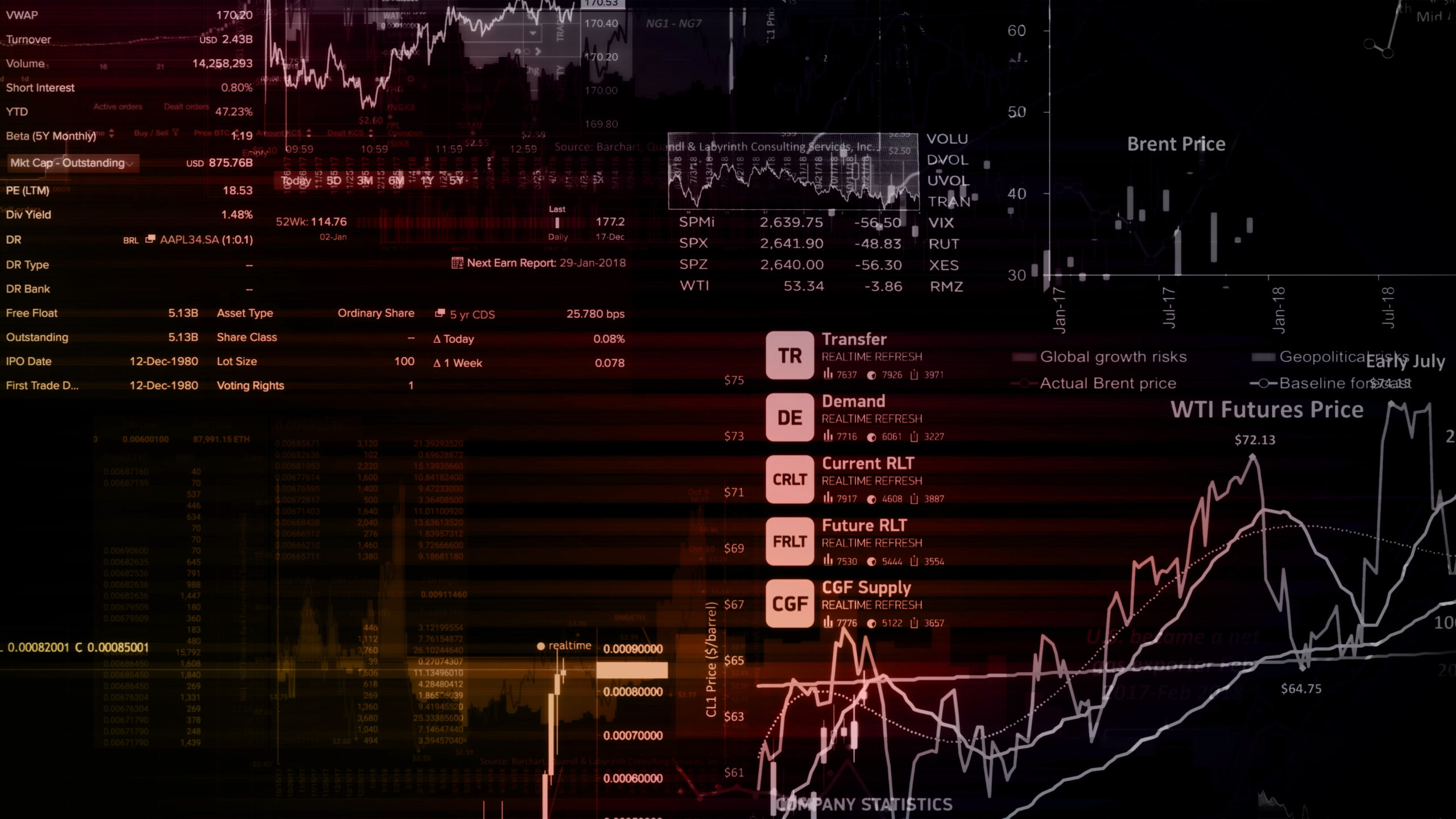Head and Shoulders in BTC and TOTAL3 | Navigator
Review Date: February 18, 2022
A graph published in a recent tweet by Fideltiy’s Jurrien Timmer, brought a bearish formation to our attention. It appears that there is a confirmed head and shoulders top in bitcoin. The major decline on 2/17 seems to confirm the pattern. Timer’s tweet thread states that price gyrations in BTC are “mostly noise.” While that may be true if you look out 10 or 15 years, the tactical reality is there is a risk of a drop in BTC to $26,000.
Data as of 02/11/2022 – Past performance not indicative of future returns
This chart also seems to match up well with the head and shoulders top pattern in Total crypto market capitalization, excluding BTC and ETH. The symbol for this measure is TOTAL3. We use TOTAL3 as our metric of altcoin market capitalization. This formation has been giving mixed signals for two weeks. That said, it would take one big downward
thrust over the upcoming weekend to confirm the pattern’s bearish implications. The critical level to watch is $700 billion.
If (key word) TOTAL is convincingly below $700 billion, it would add credence to the idea that March could be a bad month for crypto and stocks.
Data as of 02/18/2022 – Past performance not indicative of future returns
The alert message from the BTC and TOTAL3 charts seems to be confirmed by a chart from the bond market. Looking at the work of Tom DeMark, it seems interest rates have stopped rising, and bond prices have started to rise. Why would rates stop rising and bonds rally? Isn’t the Fed hiking rates? Isn’t that bad for bonds?
Well, yes and no. The Fed hiking rates and the fear of geopolitical events may have created a situation where investors flock to bonds for safety. Investors in legacy markets may be bracing for a huge move down in stock and crypto.
Let’s look specifically at the critical chart in the bond market. IEF, an ETF that more or less mimics the price of the 10-year government bond, may have bottomed. DeMark’s work shows the famous “13” and “9” reversal signals. While the calculation leading to the “13” and “9” signals is very complex, these signals are famous throughout the legacy markets as powerful indicators. The fact that the “13” and “9” signals appear in close proximity adds credence to the idea that bonds could rally because of a flight to safety.
Source: Symbolic
Data as of 02/18/2022 – Past performance not indicative of future returns
Finally, there is an important signal to watch on tokenmetrics.com. The daily all-exchange index moved into mostly cash and gold on Feb 17 and was still in cash and gold on Feb 18. As long as this index remains in cash, there is a risk the crypto market can go lower. We recommend keeping a close eye on this index in the coming days.
In stocks, there is cause for concern. The FRED database shows that the U.S. stock market, as measured by the Wilshire 5000, is valued at 2.5x the overall economic output (GDP) of the United States.
The stock market bubble could burst at any moment. Understandably, this scares crypto investors and simultaneously causes legacy investors to flee the bond market despite rising rates. If stocks are in trouble, so is crypto. It’s “unfair,” but it is the reality for the moment.
Source: Symbolic Data as of 02/18/2022 – Past performance not indicative of future returns
Bottom Line: We suspect there may be a decline in crypto between Feb 20 and Feb 23, followed by a bounce at the end of the month. The most important thing to do right now is to make sure your portfolio is diversified and that you have cash ready. There may be a chance to buy crypto for a quick trade at major support points like $34,000 in BTC. A big bounce off that level would likely be a chance for long-term investors to consider raising cash.
Geopolitics, Oil, and Crypto
Are you confused about the geopolitical situation in Eastern Europe? Are you wondering how it impacts crypto? We offer some guidance below.
The geopolitical tensions over Russia potentially mounting an invasion of Ukraine have been covered by every news network since Mid-January. This potential conflict poses a major threat for NATO and Western civilization for several reasons:
- Russia has a history of military aggression toward Ukraine with the annexation of Crimea in 2014 and through various methods of persistent hybrid warfare such as propaganda, trade and economic pressure, cyber attacks, and political manipulation.
- Ukraine is viewed as a strategic location by both NATO and Russia for virtually the same reasons: Ukraine separates Russia from 4 NATO countries (Poland, Slovakia, Hungary, and Romania). If Russia loses influence over Ukraine, this will give NATO and the US direct access to the Russian border and will put US/NATO troops approximately 300 miles away from Russia’s capital with direct access to Moscow through the M3 Route, the 300-mile superhighway that directly connects Moscow to the Russia-Ukraine border.
- For Russia to occupy Ukraine, it would need to delegate a substantial amount of its troops and military resources to the attack and seizure of Ukraine. This would greatly stretch Russia’s military capabilities because while Russia over matches Ukraine in terms of equipment, Russia would likely only be able to delegate roughly 200,000 soldiers (approximately equal to Ukraine’s armed forces) to Ukraine while still being able to maintain its security presence on its Northern and far Eastern borders to deter a possible NATO invasion.
For now, it appears to be a staring contest between Russia and the West because, on one hand, it would be very difficult for Russia to take over and occupy Ukraine. On the other hand, if the US enforces harsh sanctions on Russia, it could cause political and economic instability within Europe’s largest financial markets and potentially cause a ripple effect throughout the world.
Russia has put U.S. and NATO leadership between “a rock and a hard place”. War is and should always be seen as the last possible option, so the United States will do everything in its power to deter a Russian invasion of Ukraine. But this deterrence may come with substantial political and economic consequences to an already fragile European economy.
A recent tweet from @RenMacLLC hints that geopolitical actors may be incentivized to continue the tension and create greater and greater levels of uncertainty. The longer the threat of war exists, the more toxic it is for risk assets.
https://twitter.com/RenMacLLC/status/1493949712491335682?s=20&t=mcWkElnQ9MQ-PAgu wpWGJw
For crypto investors, the best way to track the geopolitical situation is to use the price of oil as a leading indicator. Russia is a big oil exporter, and war or sanctions may disrupt that oil flow. Oil traders are very sophisticated as many of the biggest traders likely work for huge oil producers. So, they may be most likely to anticipate what is happening in Eastern Europe before anybody else does. Right now, Brent Oil futures are bouncing off moving average support and Fib extension support near $91. If Brent crude is above $91, a move to $107 is possible.
Bottom Line: If oil goes up, that reflects war risk which makes crypto go down. If oil goes down, there can be a relief rally in crypto. If oil holds support at $91 and rallies above $100, that could be very bad for stocks and crypto.
Chinese CBDC at the Winter Olympics
The Winter Olympics began in Beijing in early February. Given the opportunity to host an event that typically attracts nearly one million attendants, the People’s Bank of China (PBOC) thought it a great time to showcase their new central bank digital currency (CBDC), the digital yuan, to international athletes and spectators.
Unfortunately for supporters of the digital yuan, which is also known as e-CNY, COVID-19 restrictions severely limited the number of international visitors able to attend the games. An official from the PBOC stated that e-CNY is used for about $300,000 of transactions per day in Beijing, not bad but certainly not what the Chinese were hoping for.
According to a video from the Wall Street Journal, many visitors prefer using Visa due to familiarity with the service. Other travelers cite security concerns in using the new currency. The PBOC claims it only collects “minimum and necessary” information for e-CNY, but requiring an ID card scan at a digital yuan ATM gives many a different feeling.
Incumbent Chinese digital payment providers, WeChat and AliPay, are looking to maintain their dominance in the region and won’t go down without a fight. Currently, 94% of all online transactions in China occur through one of these two providers.
Bottom Line: Central Bank Digital Currencies are coming, but their adoption may be slower than originally thought. China is ahead of most major economic powers in CBDC adoption, and even its rollout has been slower than expected.
Canada Sanctions 34 Crypto Wallets
Since the end of January, truck drivers have protested the international travel restrictions imposed by the Canadian government which requires everyone entering the country to be vaccinated against Covid-19. The truckers have blocked international bridges and border crossings throughout Canada. Supporters started sending donations through GoFundMe and raised more than $9 million before the account was suspended. So the supporters turned to crypto to send donations.
Donors have sent more than 20 BTC to addresses related to the “freedom convoy.” In an unexpected turn of events, Canada’s Prime Minister Justin Trudeau invoked the Emergencies Act for the first time since the law was passed in 1988, making the protests illegal. Now that the protests are deemed illegal, the Ontario Provincial Police and Royal Canadian Mounted Police ordered all regulated financial firms to sanction transactions from 34 crypto wallets that are related to the trucker protests.
The crypto wallets that were banned consist of 29 Bitcoin addresses, one Ethereum address, one Cardano address, one Ethereum Classic address, one Litecoin address, and one Monero address.
Bottom Line: Although these crypto wallets were sanctioned by the Canadian government, they are still decentralized. No government can control transactions from decentralized crypto wallets; however, they can control the centralized financial firms that facilitate fiat transactions. This shows the power behind decentralized mechanisms.
Fab 5 – Top 5 Tweets of the Week
https://twitter.com/novogratz/status/1493637007704305670?s=20&t=PT5ur9HDBJBUwMbe_ zymeg
First up we have Mike Novagratz, giving us some wisdom about Bitcoin’s correlation with gold. This tweet shows us that even the best investors got caught off guard by the decline on 2/17/2022. Many people got fooled by the big rally on Feb 15. It happens to the best of us.
https://twitter.com/Schuldensuehner/status/1493968469133512712?s=20&t=Be3ZJATwpGY6x oE7-C9PPw
After a bearish 3-months, shares of Roblox (RBLX) crashed by an additional 20% this week. Roblox is an open gaming platform that lets players create their own interactive “worlds.” The first major company working on the metaverse to go public, it sells virtual currency, which is used to purchase digital items in its games. Therefore, if you believe in the long term vision of the metaverse, then RBLX may be a stock to look for if there is a big down move in major stock indices.
https://twitter.com/DiMartinoBooth/status/1494527907401719823?s=20&t=lidvybBPqaxA%20%20WlxABQ9kxQ
Next we have a retweet from an ex-Fed governor Danielle DiMartino citing a macro analyst. Her retweet seems to confirm the idea that the St. Louis Fed’s economic uncertainty index is at its highest level since the 1987 crash.
Peter Brandt reminds us that Bitcoin is not a sprint, it’s a marathon. Currently, it seems Bitcoin is moving within an accumulation range between all-time highs. Normally this range-bound price action lasts for 2 – 3 years.
Lastly, we bring you a tweet from Jurrien Timmer, Director of Global Macro at Fidelity. Jurrien believes Bitcoin is following a technology adoption S curve. In accordance with this, Jurrien predicts Bitcoin’s fair-value range to be between $50k – $64k throughout 2022. It is interesting that Timmer used cell-phone adoption rates as a way to project the usage of the bitcoin network and then connect that data to a price prediction. This is very unique work because it can give crypto investors confidence in the long term future of the digital assets and bitcoin.
TM Grade Performance
The TM Grade was able to identify momentum plays that played out well over the past week. In fact, the table below shows a few examples of top rated coins on Friday, February 11th, and how they performed up to today, Friday, February 18th.
| Token Name | TM Grade as of the 4th | ROI |
| Retreeb | 90 | + 58% |
| Maple | 89 | + 25% |
| Adshares | 80 | + 30% |
| Axia Coin | 92 | + 21% |
| PAX Gold | 89 | + 5% |
NFT Market Cap Increased 20,000% In a Year
According to data from NFTGo, the total market cap of NFTs has increased from $84 million on February 1st, 2021 to $16.6 billion on February 16th, 2022. This is a growth rate of 19,760%.
In the past month, since January 18th, 2022, the total NFT market cap has grown from $12.3 billion to $16.6 billion, a 35% increase.
Source: NFTGo
Data as of 2/17/2022
Daily NFT trading volume rose from $3.8 million on February 1st, 2021, to its peak of $924 million on February 1st, 2022, a 24,300% increase.
Source: NFTGo – Data as of 2/17/2022
The top 10 projects that make up the total NFT market cap are Cryptopunks, Art Blocks, Bored Ape Yacht Club, Mutant Ape Yacht Club, Clone X, Meebits, Sandbox LAND, Azuki, Doodles, and Loot.
Source: NFTGo – Data as of 2/17/2022
Bottom Line: Even though the total NFT market cap has grown exponentially over the past year, when compared to the total crypto market cap it is minute. The total crypto market cap is currently sitting at $1.85 trillion which makes the total NFT market cap less than 1% as large. If the crypto markets keep going lower, investors will likely store their money in NFTs similar to how investors purchase art during stock downturns.
Sources:
- https://nftgo.io/overview
- https://www.morningbrew.com/daily/stories/2022/02/15/china-s-digital-yuan-didn-t-have-its-olympic-moment
- https://www.wsj.com/video/series/on-the-news/china-rolls-out-digital-yuan-for-foreigners-at-the-olympics/443BEAC3-8885-46C2-BC8D-83A031A1791F
- https://www.reuters.com/technology/around-300-mln-digital-yuan-used-every-day-olympics-pboc-o fficial-says-2022-02-15/
- https://www.coindesk.com/policy/2022/02/16/canada-sanctions-34-crypto-wallets-tied-to-trucker-freedom-convoy




